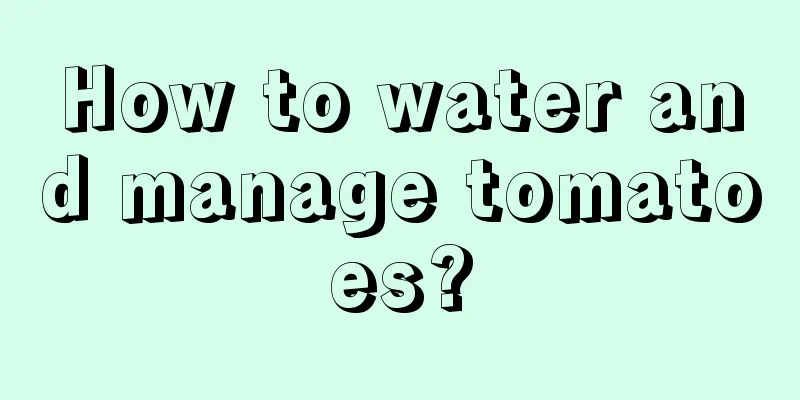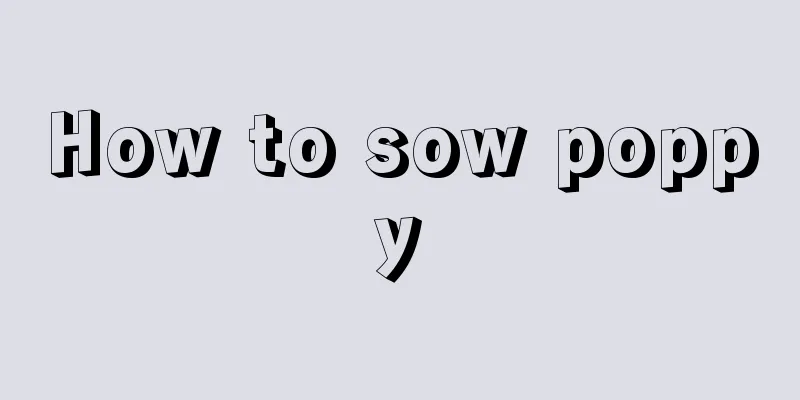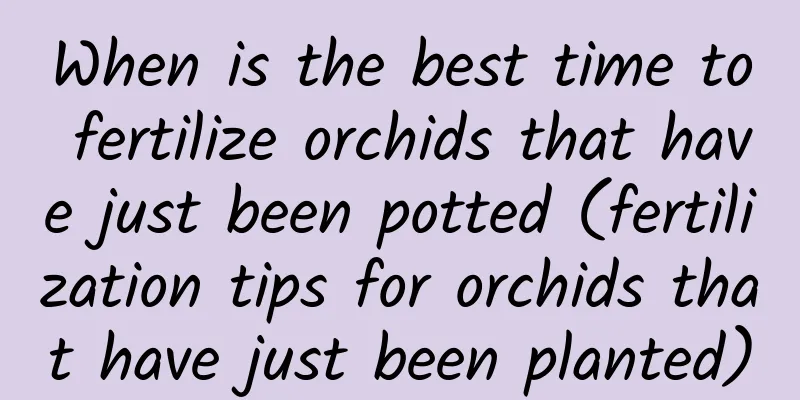How to water and manage tomatoes?

|
During the growth of tomatoes , the amount of soil moisture has a great impact on the yield and quality of tomatoes. Scientific and reasonable water management can not only reduce tomato diseases, but also promote tomato flowering and fruiting and improve the quality of tomato fruits. So how to manage tomato watering? Let’s take a look together below. 1. Choice of watering time Let’s be clear: watering timing is important! Tomatoes like a warm and humid environment, but that doesn't mean we can water them anytime and anywhere. Generally speaking, morning and evening are the best times to water. The temperature at this time is relatively low and water evaporates slowly, which is conducive to tomato absorption. Watering when the sun is strong at noon can easily cause the water to evaporate too quickly and cause burns to the tomato leaves. 2. Control of watering amount Controlling the amount of watering is also key. Tomatoes have a well-developed root system and require sufficient water to support their growth. However, excessive water can cause the soil to be too wet and cause root rot, while insufficient water can cause the tomato leaves to turn yellow and wither. So, how do you judge whether the amount of watering is appropriate? Observe the soil moisture: We can gently touch the surface of the soil with our hands. If it feels moist but not sticky, it means that the moisture content is moderate; if it feels dry, it is necessary to water it in time. Observe the condition of the plant: The leaves of a healthy tomato plant are bright green and full. If the leaves wilt or droop, it is likely that the plant is lacking water. 3. Choice of watering method In addition to controlling the time and amount, the method of watering is also important. Different watering methods will have different effects on the growth of tomatoes. Drip irrigation: Drip irrigation is an ideal way of watering. It can deliver water directly to the roots of tomatoes, reducing water evaporation and waste. At the same time, drip irrigation can prevent water from splashing onto the leaves and reduce the spread of diseases. Sprinkler irrigation: Sprinkler irrigation is suitable for small tomato gardens. Spraying water mist onto the plants through the nozzle can increase the air humidity and is beneficial to the growth of tomatoes. However, when sprinkler irrigation, you must pay attention to controlling the water pressure and water volume to avoid excessive water causing damage to the plants. Watering with a watering can: If you only have a few pots of tomatoes, then a watering can is a good choice. When using a watering can, be careful to pour the water evenly on the soil to avoid excessive water flow causing the soil to become compacted. 4. Adjust watering strategy according to growth stage Tomatoes have different water requirements at different growth stages. Therefore, we need to adjust the watering strategy according to the growth stage of tomatoes. Seedling stage: The root system of tomatoes in the seedling stage is not yet fully developed, so the soil needs to be kept moist. But don't overwater to avoid root rot. Generally speaking, watering once in the morning and once in the evening is sufficient. Growth period: After entering the growth period, the root system of tomatoes gradually develops and the demand for water also increases. At this time, we need to water in time according to weather conditions and soil moisture. In sunny weather, you can water the plants once a day; on rainy days, reduce the frequency of watering. Flowering and fruiting period: The flowering and fruiting period is the critical period of tomato growth, when the demand for water is the greatest. We want to make sure the soil is moist but not waterlogged to promote fruit development and ripening. Generally speaking, watering every one to two days is sufficient. 5. Notes There are some things to note when watering: Avoid waterlogging: Waterlogging can easily lead to oxygen deprivation and rot of tomato roots, so we must ensure good drainage and avoid waterlogging in the soil. Water temperature control: Try to avoid using cold water to directly water tomatoes to prevent damage to the plants due to excessive temperature differences. You can leave the water for a while before using it. Loosen the soil regularly: Loosen the soil regularly to increase the air permeability and water retention of the soil, which is beneficial to the growth and development of tomato roots. That’s it |
<<: How to take care of clams?
Recommend
A complete list of varieties of golden lotus
Nasturtium The flowers are wrinkled, golden yello...
What flowers bloom in spring?
winter jasmine The flowering period of forsythia ...
Main prevention and control measures for common flower diseases
Main prevention and control measures for common f...
Does Pearl Bush prefer shade or sun?
Does Pearl Bush prefer shade or sun? Pearl bush i...
What kind of fertilizer is good for pear tree base fertilizer (base fertilizer application method)
The role of base fertilizer for pear trees 1. Bec...
When is the best time to plant Hami melon?
Hami melon , also known as snow melon and tribute...
How long does it take to grow tomatoes?
How long does it take to grow tomatoes? Cherry to...
When is the best time to prune Hibiscus?
Hibiscus pruning effect When planting many plants...
What to do if you water your cyclamen too much
Overwatering Cyclamen Harms of excessive watering...
Can bicolor jasmine be poured with vinegar? The correct way to pour vinegar
Can I use vinegar to water the two-color jasmine?...
How to fertilize green radish
1. How to fertilize The fertilization of green ra...
How to deal with freesia after it blooms
Freesia flower bulb After the freesia blooms, the...
How to grow Huayuejin
1. Breeding conditions 1. Soil: The soil should b...
When is the best month to repot Kalanchoe?
The leaves of Kalanchoe are large and shiny, with...
Is it good to keep mint at home?
1. Feng Shui Benefits 1. Boost your wealth Growin...









